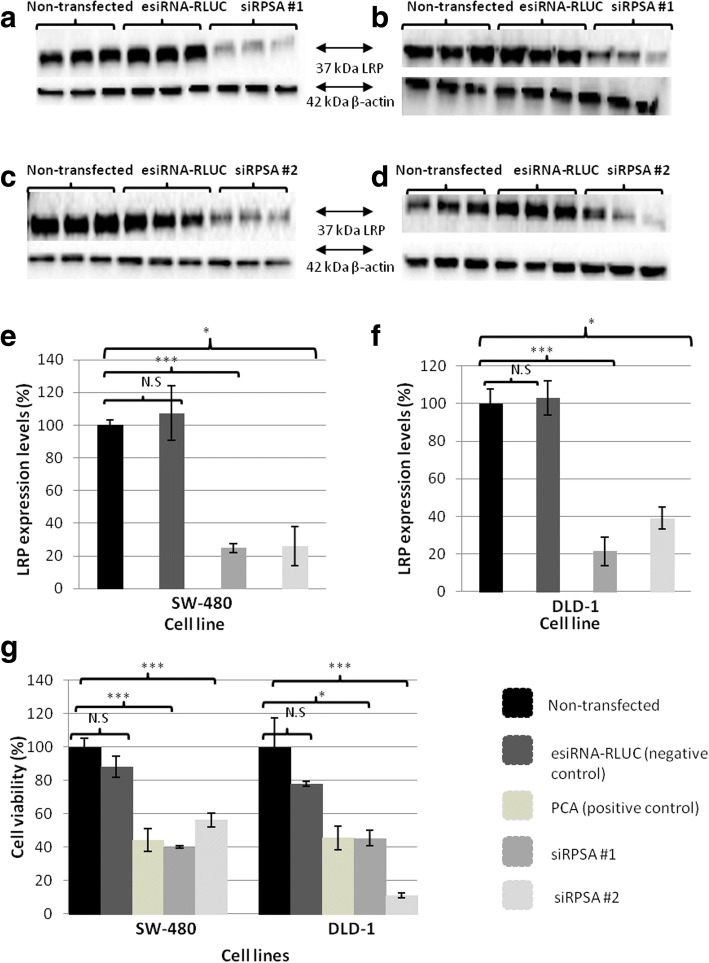Fig. 1.
The effect of siRNA-mediated knock-down on LRP expression and the viability of early (SW-480) and late (DLD-1) stage colorectal cancer cells. a), c) and e) Upon transfection of SW-480 with siRPSA #1 and siRPSA #2, significant 75 and 72% decreases in LRP expression levels was revealed, respectively, in contrast to cells that were not transfected. Densitometric analysis of LRP levels was performed where levels of the non-transfected cells were set to 100%. ***p = 0.0001, *p = 0.02 N.S.:p > 0.05. b), d) and f) siRPSA #1 and siRPSA #2 transfection in DLD-1 cells caused significant 79 and 61% decreases in LRP expression levels, respectively, when comparing them to cells that were not transfected. Densitometry displayed no significant difference in LRP expression between non-transfected and negative control esiRNA-RLUC transfected cells for both cell lines. ***p = 0.0005, *p = 0.02 N.S.:p > 0.05. g) MTT assays were performed to assess SW-480 and DLD-1 cell viability, upon treatment with siRPSA #1 and siRPSA #2. Non-transfected cell value were set to 100%. It was found that upon siRPSA #1 transfection, SW-480 and DLD-1 cells exhibited a significant decrease of 60 and 55% in cellular viability, respectively, in contrast to cells that were not transfected. It was also revealed that when the SW-480 and DLD-1 were transfected with siRPSA #2, there were significant reductions of 44 and 89% in cellular viability, respectively, when compared to non-transfected cells. Both cell lines showed no noteworthy differences in cell viability when treated with the negative control esiRNA-RLUC. PCA was used as the positive control. SW-480: siRPSA #1:***p = 0.0008, siRPSA #2:***p = 0.0004 DLD-1: siRPSA #1:*p = 0.01, siRPSA #2:***p = 0.0009, N.S. :p > 0.05, non-significant. All graphs represent an average of three biological and three technical repeats

